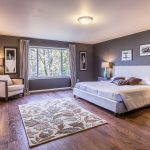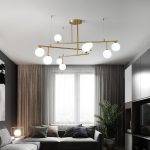
Dark lighting, also called low lighting, is a type of lighting used to create a dim and mysterious atmosphere in a space. It can be used in various settings, such as restaurants, bars, clubs, theaters, and homes. Dark lighting can enhance the mood and tone of a space, making it suitable for specific activities or events. In this article, we will delve deeper into the world of dark lighting, its benefits, and drawbacks, and how it can be used to create a unique ambiance.
Pros of Dark Lighting
Dark lighting has several benefits that make it an attractive option for various settings. For instance, it can create a cozy and intimate atmosphere, perfect for romantic dinners or dates. By diffusing the light, it reduces harsh lighting and glare, making it more comfortable and appealing to the eyes. Additionally, dark lighting can make a space look more upscale and sophisticated, giving it a sense of elegance and class. It can also create a dramatic and theatrical effect, making it ideal for live shows or performances.
Cozy and Intimate Atmosphere
Dark lighting can create a warm and cozy environment that encourages relaxation, enjoyment, and connection. When used in the right way, it can help to set the tone for a pleasant and memorable experience. For instance, restaurants may use dimly lit candles or lamps to create an intimate and romantic ambiance, perfect for couples. Such lighting can help to stimulate the senses, making the food and conversations more enjoyable.
Reduced Harsh Lighting and Glare
Dark lighting can help to reduce the harsh glare of traditional lighting sources, making it easier on the eyes. Bright lights can be uncomfortable and overwhelming, leading to headaches, eye strain, and fatigue. Therefore, dimming the lights or using more subtle sources such as lamps or candles can create a more relaxed and comfortable setting that promotes conversation and relaxation.
Sense of Elegance and Sophistication
Dark lighting can add a touch of class and sophistication to any space. By creating subtle shadows and layers of depth, it can make a space look more elegant and luxurious. For instance, in high-end restaurants or bars, dark lighting can make the space look more glamorous and exclusive, enhancing the overall experience.
Cons of Dark Lighting
While dark lighting has several benefits, it also has some drawbacks that should be considered. For example, it can make it difficult to see, leading to stumbling, tripping, and other accidents. In addition, it can make it hard for people to read menus or follow directions, causing frustration and inconvenience. Furthermore, it can create a gloomy and depressing environment, especially when used for extended periods.
Reduced Visibility and Safety
Dark lighting can impair visibility and safety, making it difficult to see objects, people, or surroundings. For example, in a restaurant or club, low lighting may make it hard for servers to navigate through the crowds, leading to spilling or slipping accidents. Similarly, it may make it hard for individuals to find their way around or read menus or signage, causing confusion, frustration, and annoyance.
Gloomy and Depressing Environment
Dark lighting, while suitable for creating an intimate and mysterious atmosphere, can also make a space look gloomy and foreboding. It may not be ideal for areas where people need to feel energized, stimulated, or upbeat, such as offices, classrooms, or gyms. Furthermore, if used for extended periods, such as in homes, it may cause feelings of loneliness, boredom, or isolation, leading to depression or anxiety.
How to Use Dark Lighting Effectively
To use dark lighting efficiently, it is essential to understand its purpose, limitations, and effects. Here are some tips on how to use dark lighting effectively:
Combine with Other Light Sources
To ensure visibility and safety, it is important to combine dark lighting with other sources of light, such as ambient, task or accent lighting. For example, in a restaurant, dark lighting can be paired with candles on tables, or small lamps on walls, providing additional lighting without compromising the cozy ambiance.
Use for Specific Events or Activities
Dark lighting is best used for specific events or activities that require a particular ambiance, such as romantic dinners, cocktail parties, or theatrical performances. Using it for extended periods or daily routines may lead to feelings of depression, loneliness, or boredom. It is essential to consider the emotional and mental effects of dark lighting and use it judiciously.
Choose the Right Intensity and Color Temperature
The intensity and color temperature of dark lighting can influence the mood, tone, and atmosphere of a space. Therefore, it is crucial to choose the right level of intensity based on the purpose and setting of the space. For instance, a dimmer lighting may be suitable for romantic dinners or live concerts, but not for working or studying. Similarly, the color temperature of dark lighting should complement the colors and decor of the space.
Dark lighting can add a touch of mystery, intimacy, and sophistication to a space, making it suitable for various events and activities. However, it also has some drawbacks that should be considered, such as reduced visibility, safety, and mood. To use it effectively, it is essential to combine it with other light sources, use it for specific events or activities, and choose the right intensity and color temperature. By using dark lighting judiciously, we can create unique and memorable experiences that enhance our lives.







